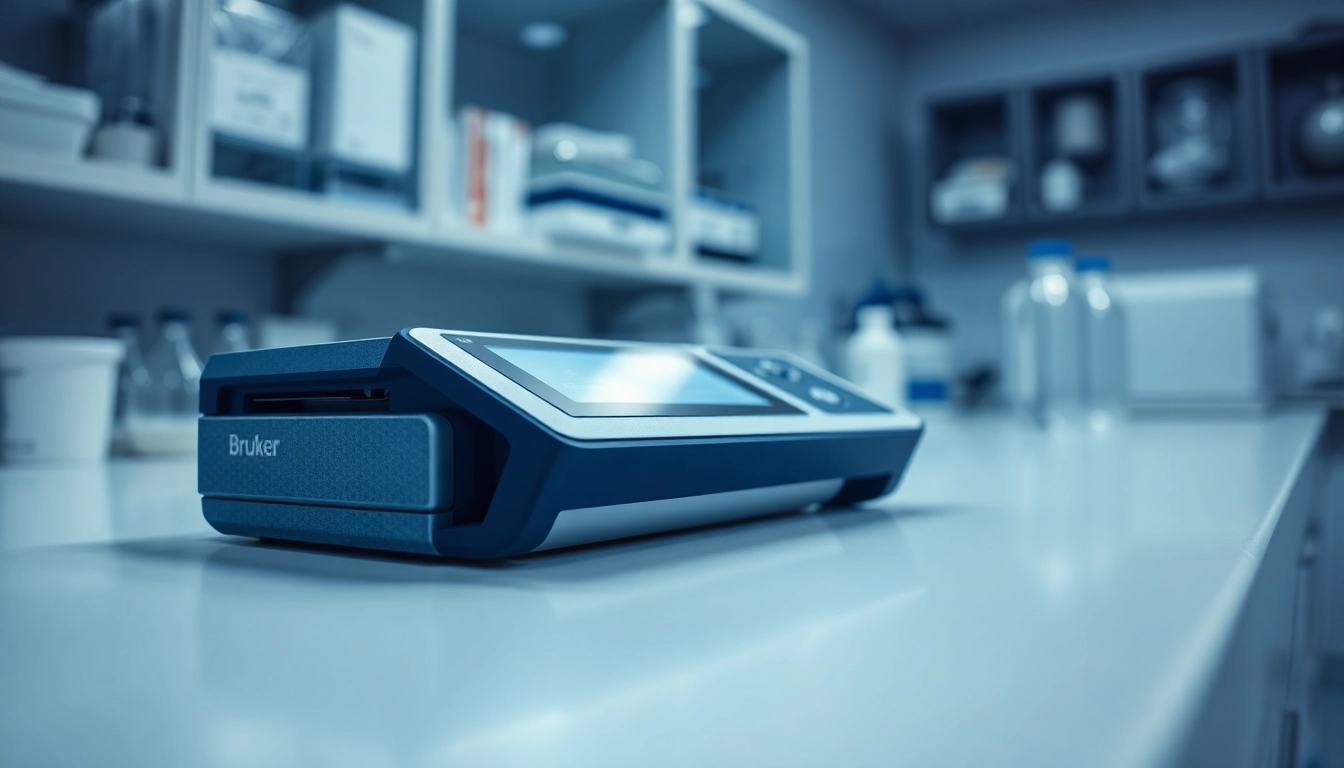
Understanding the Bruker EOS 500 Handheld LIBS Analyzer
1. Overview of LIBS Technology
Laser-Induced Breakdown Spectroscopy (LIBS) is a powerful analytical technique that leverages laser pulses to analyze the elemental composition of materials. In this method, a focused laser beam is directed at a sample, generating a high-temperature plasma that excites the atoms within the material. As the plasma cools, the excited atoms emit light, which is then analyzed to identify the elements present in the sample. LIBS offers a number of advantages, including rapid analysis, minimal sample preparation, and the ability to analyze solids, liquids, and gases.
2. Key Features of the Bruker EOS 500
The Bruker EOS 500 Handheld LIBS Analyzer is designed for professionals seeking reliability, versatility, and ease-of-use in fieldwork. Key features include:
- Portability: Weighing less than many traditional lab equipment, the EOS 500 is fully portable, making it ideal for on-site analysis.
- High Sensitivity: The analyzer is equipped with advanced detectors that provide high sensitivity, allowing for precise detection of trace elements.
- Real-Time Analysis: Users benefit from immediate results, enabling quick decision-making in various industrial applications.
- User-Friendly Interface: The device features an intuitive touchscreen interface that simplifies operation for both experienced and novice users.
- Rugged Construction: Built to withstand harsh environments, this analyzer is dust and water-resistant, ensuring durability in diverse conditions.
3. Applications in Diverse Industries
The versatility of the Bruker EOS 500 makes it suitable for a broad range of industries:
- Mining and Mineral Exploration: Used for analyzing ores and determining the presence of valuable metals.
- Environmental Monitoring: Helps in analyzing soil and water samples for contamination assessments.
- Manufacturing: Utilized in quality control processes to verify material composition.
- Jewelry and Gemology: Essential for identifying gemstones and precious metals.
- Aerospace: Assists in materials testing to ensure compliance with industry standards.
Benefits of the Bruker EOS 500 for Professionals
1. Enhancing Accuracy in Testing
When precision is paramount, the Bruker EOS 500 delivers. Its high-quality optics and advanced software algorithms enhance the accuracy of elemental analysis, reducing the likelihood of false positives or negatives. The built-in calibration features ensure the device maintains optimum accuracy over time, accommodating variations in environmental conditions and adjusting for different material types.
2. Portability and Ease of Use
One of the standout benefits of the Bruker EOS 500 is its handheld design. Weighing significantly less than larger laboratory equipment, it can easily be transported to any location. This level of portability is paired with a user-friendly interface, enabling professionals to conduct tests with minimal training. The quick setup and straightforward operation reduce downtime, making your testing process more efficient.
3. Cost-Effectiveness in Analysis
With the capacity for real-time analysis, the EOS 500 significantly reduces the costs associated with traditional laboratory testing, which often involves lengthy sample preparation and shipping. Moreover, the analyzer’s ability to perform multiple tests in the field diminishes the need for repeated analyses, leading to substantial savings over time.
Comparative Analysis: Bruker EOS 500 vs. Competitors
1. Evaluating Performance Metrics
When comparing the Bruker EOS 500 to other handheld LIBS analyzers, several performance metrics come into play, including detection limits, speed of analysis, and the range of elemental detection. The EOS 500 is noted for its exceptional sensitivity, often outperforming competitors when detecting trace elements in complex matrices.
2. User Feedback and Market Reception
User feedback for the Bruker EOS 500 has been predominantly positive, with many professionals appreciating its reliability and performance in challenging environments. Users across various sectors have highlighted the analyzer’s effectiveness in providing accurate results quickly, making it a preferred choice in fields ranging from metallurgy to environmental science.
3. Pricing Strategies Across Brands
The price point for the Bruker EOS 500 is competitively positioned within the market. While some competitors may offer lower-cost options, the EOS 500’s advanced features and proven reliability justify its pricing. Many users agree that investing in a higher-quality tool pays dividends in terms of efficiency and accuracy in their analytical needs.
Common Challenges When Using the Bruker EOS 500
1. Calibration and Maintenance Issues
Like any sophisticated analytical instrument, the Bruker EOS 500 requires regular calibration and maintenance to perform optimally. Users should develop a routine maintenance schedule that includes cleaning lenses, checking for software updates, and performing calibration checks with known standards to ensure ongoing accuracy.
2. Interpretation of Results
While the EOS 500 provides extensive data, interpreting this information can pose challenges, particularly for users without a strong background in analytical chemistry. It’s essential for users to undergo training on data interpretation and to understand the context of the results to draw valid conclusions regarding material properties and composition.
3. Common User Errors and Solutions
Common errors when using the EOS 500 can include improper sample positioning and inadequate laser contact with the material. To mitigate these issues, users should be trained in best practices for sample placement and the use of the device. Regular user feedback sessions can help identify persistent issues and facilitate smoother operations.
Future Trends in Handheld LIBS Analysis
1. Innovations in Handheld Technology
The future of handheld LIBS analysis looks promising with technological advancements on the horizon. Innovations may include improved battery life, enhanced detection capabilities, and more integrated data analysis systems that leverage artificial intelligence to provide insights from the gathered data in real-time.
2. Integration with Other Analytical Tools
Moreover, the integration of handheld LIBS analyzers with other analytical methods, such as X-ray fluorescence (XRF) or Fourier-transform infrared spectroscopy (FTIR), can provide a more comprehensive analysis of materials. This synergy between technologies will enable professionals to expand their analytical capabilities and derive richer insights into complex samples.
3. Predictions for Market Growth and Demand
As the demand for rapid, in-field analysis grows across industries, the market for handheld LIBS analyzers like the Bruker EOS 500 is expected to expand significantly. Future developments may also see wider adoption in emerging sectors, such as nanotechnology and biomedicine, driven by the need for precise micro-analysis.